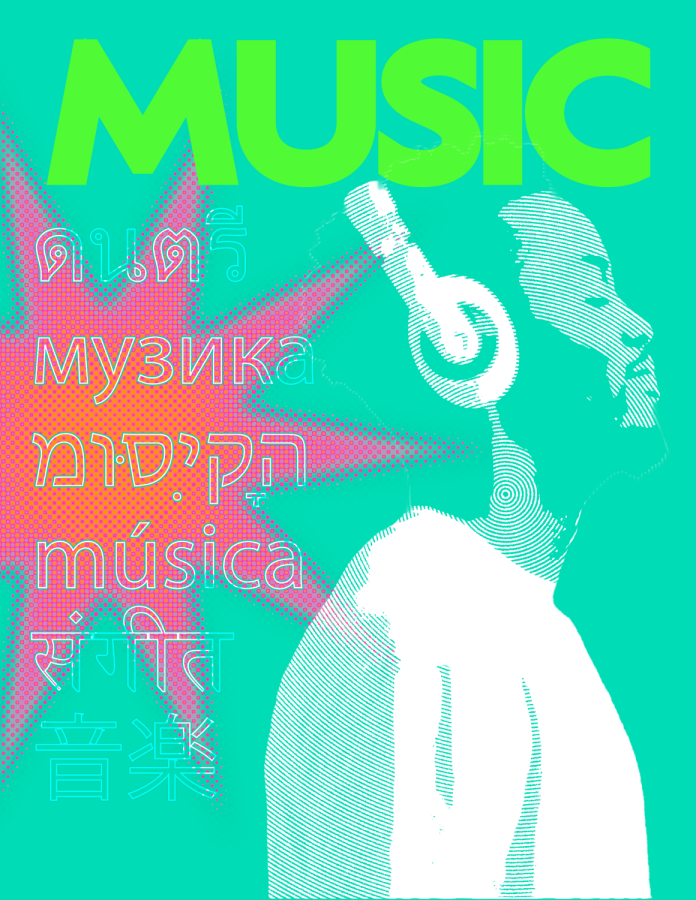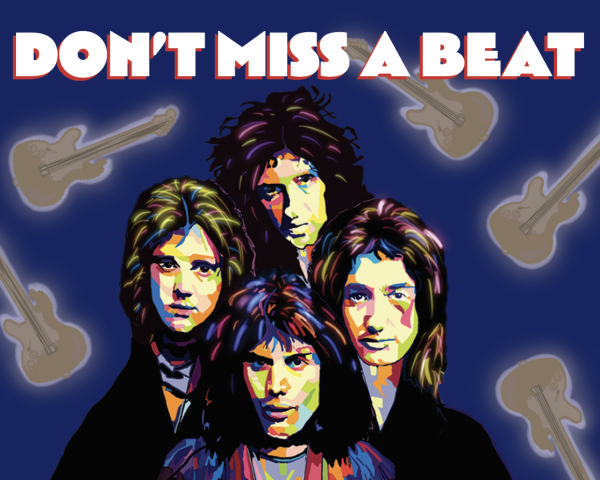Music, ดนตรี, музика, מוּסִיקָה, música, संगीत, 音楽
Despite language barriers, music finds a way to unite
Outfitted with a classic white tee and backwards baseball cap, Bad Bunny lit up the Grammys stage with the opening performance. Culminating a record breaking year in which he had the highest grossing tour ever, and the featured first ever Spanish language album nominated for Album of the Year, Benito — as fans know him — got music’s top stars dancing on the Staples Center floor as he performed a medley of Puerto Rican folkloric and reggaetón rhythms, electronic dance music and an energetic merengue and mambo track.
And Bad Bunny is certainly not an isolated example of non-English music becoming more popular. In 2016, Youtube’s annual top songs report had only one non-English song in the top ten. Fast forward to this week’s rankings by Youtube: only three songs in English appear on the list. This trend in listenership is echoed on campus here at Paly.
“I listen for catchy beats,” junior Nate Donaker said. “For me, Latin music with its trumpets has that beat that I’m looking for.”
Almost every listener, whether unknowingly or knowingly, has a preference for what they look for in music. Junior Siri Schaefer-Bastian pays a lot of attention particularly to the lyrics of the song.
“I like to be able to connect with lyrics and find them catchy and match the melody of a song,” Schaefer-Bastian said.
Each region has its own unique sound profile drawing on cultural influences and history.
“K-pop songs are very poppy, very bright energy and the lyrics are usually a lot cleaner than American ones,” senior Allison Dayton said. “But then there’s also Italian bands, which are super vulgar.”
Donaker doesn’t speak Spanish, but he finds that the language barrier isn’t a deterrent.
“I enjoy the sounds of the music,” Donaker said. “I don’t really care about the lyrics or what the artists are saying.”
However, there are some risks of listening to music you cannot understand: mainly, not knowing what type of language or subject matter you are singing along to.
“There’s this one Italian band I listen to and I’ll be like, ‘I love this. This is such a good song,’” Dayton said. “And then I’ll look at the lyrics and I’ll be like, ‘Oh my god, what am I thinking?’”
However, in today’s technology age, there are tools that can help listeners understand the meaning behind the lyrics.
Senior Felicia Lee speaks both Korean and English, so when listening to English and Korean music, she understands the lyrics. Occasionally, she will also listen to Japanese music. Despite not understanding the lyrics, she uses tools at her disposal to find the meaning.
“If you just search up the lyrics to say ‘the title of the song and lyrics’ and use Google, then they have a translation in English,” Lee said. “So I guess [you] can understand what the lyrics are saying through searching on Google.”
English speakers are so accustomed to American pop songs that it can be hard to adapt to the different styles that foreign music often has.
“I generally like to listen to music that’s in English more because that’s what I listen to the majority of the time, and I’m less picky with the style and genre of the music,” Schaefer-Bastian said. “I grew up listening and being constantly surrounded by English music, so different languages and music that are in different languages are very foreign to me.”
Students and teachers who speak multiple languages have a different experience. Ms. Ambrosio uses music as a way to immerse her students into the Spanish culture and language.
“From the [music] videos, you can learn about the culture, see how they’re dressed and what the landscape is like,” Ambrosio said.
Ambrosio applies techniques learned from her experience taking a course on how music in foreign languages can promote a more efficient adaptability to the language being learned.
“The old fashioned way is listening to a song and then having the lyrics printed and you just take out words,” Ambrosio said. “Then they just fill them in as they hear them so by the time they don’t hear the song you really understand and can appreciate it much more than just listening to it once.”
Understanding the appeal behind music in a foreign language can seem unattainable but what many fail to realize is that music is a way of fostering community between people who don’t understand each other.
“Just listening to music, I think it helps you realize there’s a common thread between all of us and even if you don’t understand the language, you can all enjoy the music and the sounds,” Ambrosio said.
Dayton echoes Ambrosio’s sentiment. Despite the apparent language barriers, music has the power to move people.
“Language is universal, but everyone has different languages,” Dayton said. “It’s crazy that [music is] one of the things that kind of connects every single language.”
Music in different languages not only connects people, but can provide listeners with insight into other countries or cultures.
“Songs show what’s going on in that country,” Lee said. “It shows the trends, then you also get to know what’s kind of popular or going on in [other countries].”
Those who have become disconnected from their own cultures, whether it’s due to moving to the states or just becoming more involved with American styles, also use music as a way to connect back to their culture.
“I like to listen to some German pop music, as well as French and Spanish music, but I like listening to German music because it helps me feel connected to my German culture and identity,” Schaefer-Bastian said.
Ambrosio strongly believes in the values that foreign music provides to its listeners.
“[Foreign music] makes people feel more cosmopolitan and more worldly,” Ambrosio said. “When they listen to their [foreign] songs, it also gives them a window into another culture.”
Featured art by Kellyn Scheel
Print Issue
Please click on the three vertical dots on the top right-hand corner, then select “Two page view.”

2022-2023 Staff Writer
2023-2024 Editor-In-Chief
I joined C Mag because I was drawn in by the diversity of design and creativity throughout each...

2022-2023 Staff Writer
2023-2024 Editor-In-Chief
I joined C-Mag because I'm really passionate about the arts, music, and just about anything C-Mag...

2021-2022 - Staff Writer
2022-2023 - Online-Editor-In-Chief
I joined C Mag because I love art and music. I love C Mag's creative freedom. We get...







